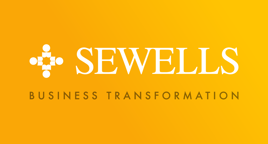In this month’s people management topic from Sewells, managing director Gail Harrison hopes that automotive managers will reflect on the importance of getting value from team meetings.
Here we go again. You are sitting in yet another meeting wondering why you are there. Mentally working through the list of things you could be doing instead.
The same discussion you had on the same topic last week is going on and you are inwardly thinking “Give me strength” dreaming of the days when you actually make a decision…
Imagine if you could drastically reduce the amount of time wasted in unproductive meetings. What would that mean to you? More time to focus on meaningful work? Increased efficiency? More sales? Increased productivity?
Meetings are meant to foster collaboration and drive decision-making, but too often they become time stealers, draining energy and productivity.
Countless hours are spent in unproductive meetings in most businesses. Lack of objectives, no agenda, fluid timings lead to poor time management, the wrong attendees, lack of preparation, lack of clarity about the focus for the meeting and… to top it all off you know that next week you’re going to do it all again!
You are on the meeting merry-go-round.
Did you know:
- The average professional spends over five hours per week in meetings and nearly four hours preparing for them (a whole day!) with only 30% of those meetings considered productive (Flowtrace)
- The average employee spends around 31 hours per month in unproductive meetings and 47% of employees view meetings as the biggest time waster. (Worldmetrics)
- Over 50% of meetings lack a clear agenda and contribute to wasted time and inefficiency in many organisations. (Runn.IO)
So we’ve got reduced productivity, frustration and lack of progress. I’ve even come across examples where 70 people are invited to a conference call when only about 5 or 6 people actively engage, or team members are invited to meetings because they ‘may’ need to be there.
Six Tips to Solve this Problem
1) Be really clear about the purpose of meetings.
- What’s the outcome you’re looking for?
- Are you there to make a decision, or there to discuss an issue?
- What outputs are you expecting? Make sure all attendees know this.
“You have a meeting to make a decision not to decide on the question” Bill Gates
2) Check meeting attendees.
- When inviting others to a meeting ask yourself:
- What value are they adding?
- What value are they going to gain from the meeting?
- If the answer is “neither!”, seriously consider if you need them to be at the meeting at all.
- Equally, if you are struggling with this as an attendee consider flagging it and see if you can gain the time back from the meeting to do something more productive.
“Meetings should have as few people as possible, but all the right people” Charles W Scharf
3) Does the meeting have a clear agenda?
- If it’s your meeting, ensure you write a clear meeting agenda to set expectations
- Refer to it often in the meeting, keeping you on track.
“You should never go to a meeting or make a telephone call without a clear idea of what you are trying to achieve” Steve Jobs
4) Start and end on time
- Don’t overrun without permission. Make sure you allocate enough time for the agenda, whilst at the same time keeping it focused.
- Consider stand-up meetings. If people are standing, and possibly making notes, they can’t also be drinking a coffee. (Sometimes people use meetings as an opportunity to have some downtime!).
- I once knew a manager who would lock the door one minute before the meeting started so if you turned up late you couldn’t attend. Interestingly, people were always punctual and his meetings were quick, punchy and productive.
“The longer the meeting the less is accomplished” Tim Cook
5) Make it clear beforehand if preparation is required.
- If people need to read up on information beforehand tell them, and explain that a decision will be made in the meeting.
- Give clear parameters i.e. “we’ll be making the decision so it’s important to ensure everyone is up to speed on X&Y” …
- OR, do a Jeff Bezos and give time for reading documents in the meeting ensuring everyone has read it and is on the same page.
“The magic to a great meeting is all the work that’s done beforehand” Bill Russell
6) Capture action owners and timescales.
- Before you finish the meeting check in with:
- What have we agreed here?
- Who’s taking that action?
- When will you complete it by / make progress by?
- How will we check progress and confirm it’s been actioned?
“Words may inspire but only action creates change” Simon Sinek
Meetings are meant to be a positive force for good, helping businesses to achieve their goals, work together more effectively and enable clearer aligned collaboration.
Instead, many meetings achieve cult status for their lack of focus and ability to suck the life out of the attendees
What if you could transform your meeting into streamlined, effective sessions that really do enhance your business results?
By reviewing and evaluating how you approach meetings, and adopting the tips we’ve shared, you can ensure your meetings really do energise rather than exhaust…
When your meetings are meaningful, efficient and action-orientated every meeting helps drive your business to achieve its goals.
The change starts with you.
Author: Gail Harrison, managing director, Sewells



